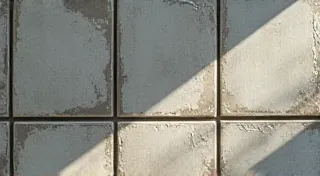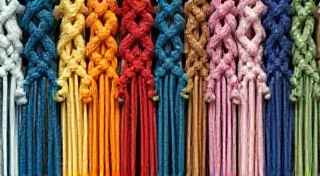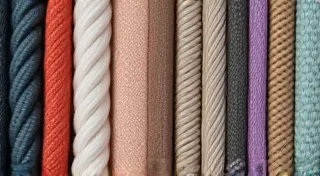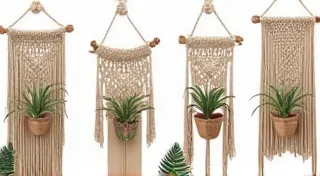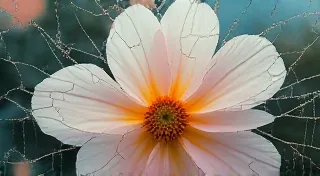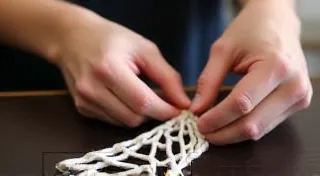The Lark's Head Knot: Starting Your Macrame Projects
Welcome to the wonderful world of macrame! If you’re a complete beginner, you’re likely eager to dive into your first project. A crucial first step in many macrame creations is mastering the Lark's Head knot. This knot, also known as the reverse hitch, is a fundamental building block and often the starting point for countless macrame designs. This tutorial will break down the Lark's Head knot in detail, so you can begin your macrame journey with confidence.
What is the Lark's Head Knot?
The Lark's Head knot is a deceptively simple knot that creates a loop around a cord or dowel. It’s characterized by the loop appearing *behind* the cord, which distinguishes it from the Square Knot (another beginner-friendly knot). Understanding the correct placement of the loop is key to a neat and professional finish. Before you start, however, knowing which types of cord to use is a great first step. Learning about understanding macrame cord types and sizes will really set you up for success.
Materials You'll Need
- Cord (cotton cord is perfect for beginners)
- A dowel, ring, or other support
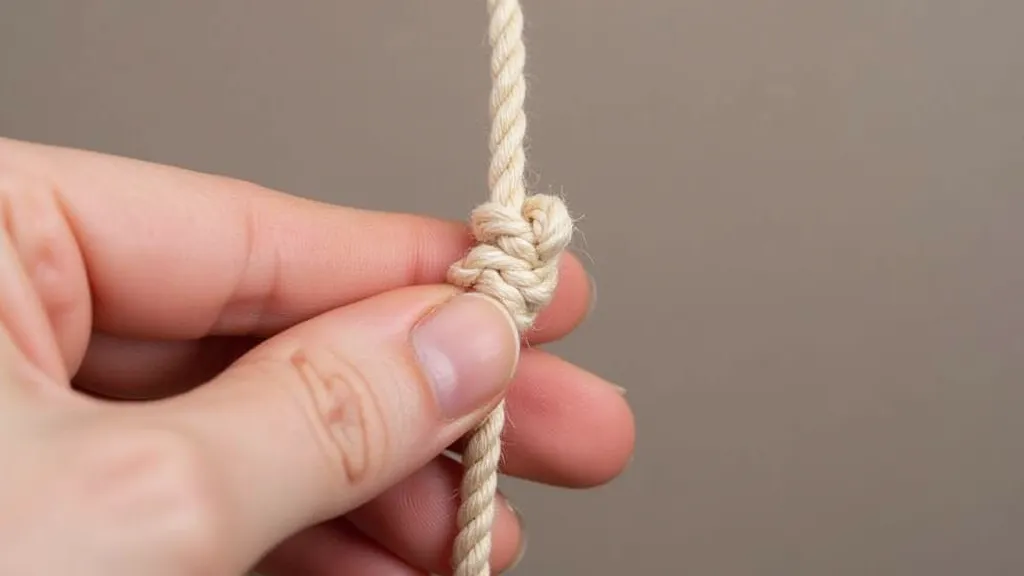
Step-by-Step Tutorial: Tying the Lark's Head Knot
- Prepare Your Cord: Take your cord and fold it in half, creating a loop.
- Position the Support: Hold the support (dowel, ring, etc.) in front of your folded cord.
- Bring the Loop Over: Bring the loop of the cord over the support and behind it.
- Pull the Ends Through: Pull the loose ends of the cord under the loop and through the opening created behind the support.
- Tighten the Knot: Gently pull the loose ends to tighten the knot around the support. Ensure the loop sits neatly behind the cord – this is the defining characteristic of the Lark's Head knot.
- Repeat (if needed): Most macrame projects use multiple Lark's Head knots to attach the cords to the support. Simply repeat the steps above to create more knots.
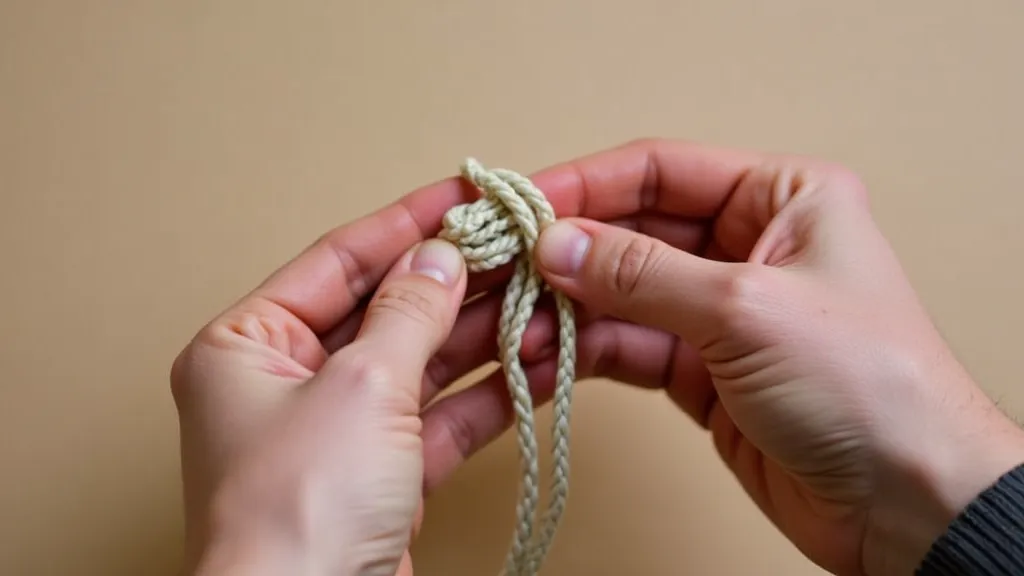
Tips for Success
- Keep it Consistent: Ensure each Lark’s Head knot is tied with the loop consistently oriented to maintain a neat appearance.
- Practice Makes Perfect: Like any new skill, practice will improve your technique. Don't be discouraged if your first few knots aren't perfect.
- Tension is Key: Consistent tension in the cord is important for a clean look.
- Choosing the Right Colors: The beauty of macrame isn't just in the knots themselves, but also in the aesthetic they create. Experimenting with macrame color combinations can take your projects from simple and functional to truly stunning.
Beyond the Basics: Project Ideas to Inspire You
Once you’re comfortable with the Lark's Head knot, the possibilities are virtually endless. It's a foundational knot used in a huge variety of projects. But what can you *actually* make? Here are some ideas to get your creative juices flowing. From simple starter projects to more ambitious creations, the Lark’s Head knot is your key to unlocking a world of beautiful, handmade items.
Beginner-Friendly Projects: For your first few attempts, you might want to start with something small and manageable. Coasters are a fantastic choice, as they require a relatively small amount of cord and offer a satisfying result. The process of creating these is straightforward, and the finished product is both practical and decorative. You can find easy-to-follow instructions for beginner-friendly coasters online.
Wall Hangings: A Classic Macrame Design: Wall hangings are arguably the most recognizable macrame creations. They add a bohemian touch to any room and can range from simple geometric patterns to elaborate, nature-inspired designs. Learning the Lark’s Head knot is essential for creating the base structure of these hangings. After the foundation, you're really only limited by your imagination! Many incorporate a wider range of techniques; for a deeper understanding of the art, you might find inspiration from "Echoes of the Weaver: Finding Ancestral Rhythms in Hand Knotting," which explores the historical and artistic context of intricate knotting traditions.
Plant Hangers: Bring Nature Indoors: Plant hangers are a trendy and practical way to display your indoor plants. The Lark's Head knot is often used to create the supporting structure of these hangers, allowing the plant to dangle gracefully. They're a perfect blend of functionality and aesthetics, making them a popular choice for both seasoned and aspiring macrame artists. The visual impact is significantly enhanced with different techniques, making for a far more impactful piece.
Understanding the Underlying Principles of Macrame
The Lark's Head knot, along with other fundamental knots like the Square Knot and Half Hitch, are the building blocks of macrame. Understanding how these knots interact and how they can be combined allows for an almost limitless variety of designs. As you progress in your macrame journey, you'll start to see patterns and relationships between knots that allow you to create entirely new and original designs. Think of it like learning the alphabet - once you know the basics, you can create any word or sentence you like. Similarly, with macrame, the more knots you learn and the more you understand their relationship to each other, the more creative and expressive you can become. If you’re eager to expand beyond just the basics, exploring “Macrame Projects: 5 Ideas for Decorative Home Accents” will provide further inspiration and guidance.
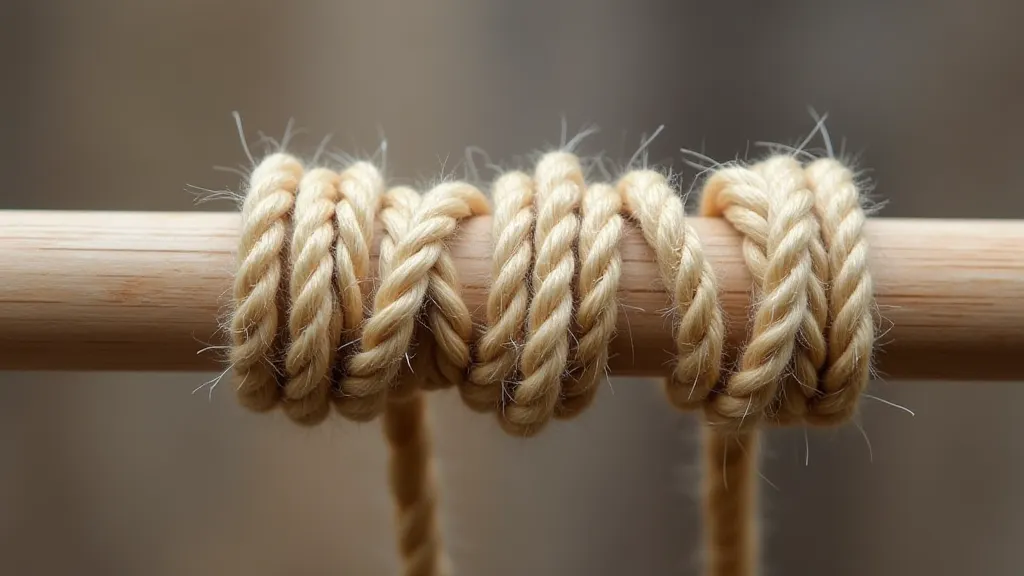
Troubleshooting Common Problems
Even with careful instruction, beginners often encounter a few common issues when learning the Lark’s Head knot. One of the most frequent problems is inconsistent loop orientation, which can lead to a messy and uneven finished product. To avoid this, take care to ensure that the loop always sits behind the cord in the same direction. Another common challenge is difficulty maintaining consistent tension. If your knots are too loose, the finished product will appear sloppy. Conversely, if they are too tight, the cord may become distorted. Practice and experimentation will help you find the sweet spot in terms of tension.
Another issue some beginners face is struggling to visualize the knotting process. If you find it difficult to follow written instructions, consider watching video tutorials. Seeing someone tie the knot in real-time can often be more helpful than simply reading about it. Don’t be afraid to pause the video and rewind as needed. With a little patience and persistence, you're sure to master the Lark’s Head knot.
Expanding Your Macrame Skills: Patterns and Inspiration
Once you’re comfortable with the basics, the next step is to explore more complex patterns and designs. There are countless resources available online and in libraries that offer a wide variety of macrame projects, ranging from simple to advanced. Don’t be afraid to challenge yourself with new and unfamiliar designs. Every project you complete will build your skills and expand your creative horizons. If you're looking to add texture and dimension to your projects, consider learning the "Double Half Hitch Knot," a valuable technique for creating visually appealing designs. If you're striving for a more sophisticated and artistic outcome, you might find value in "Fractured Symmetry: Finding Grace in Macrame’s Imperfections," which explores embracing asymmetry and irregularity in your work.
The Significance of Material Choice and Cord Manipulation
Beyond the knots themselves, the tactile qualities and visual impact of your macrame creations are deeply influenced by the materials you select and how you manipulate them. Different types of cord—ranging from natural fibers like cotton and jute to synthetic options like nylon and polypropylene—offer distinct textures, draping properties, and durability. Understanding the interplay between knot structure and material behavior is crucial for achieving the desired aesthetic and functional qualities. For instance, a looser, more organic aesthetic might be achieved with a thick, loosely twisted cotton rope, while a sleek, modern look might benefit from a smoother, more uniform synthetic cord.
Maintaining and Caring for Your Macrame Creations
Proper care is essential for preserving the beauty and longevity of your macrame creations. Regular dusting with a soft brush can prevent dust buildup. For more thorough cleaning, spot-clean with a mild detergent diluted in water. Avoid harsh chemicals or abrasive cleaners, which can damage the fibers. If your macrame piece is particularly delicate or valuable, consider professional cleaning. To prevent stretching or distortion, avoid excessive humidity or direct sunlight.
Macrame as a Continuing Artistic Journey
Mastering the Lark's Head knot is just the beginning of your macrame adventure. As you gain experience, you’re encouraged to experiment with different knot combinations, color palettes, and design elements. Macrame is a versatile art form that can be adapted to a wide range of styles and purposes, from functional home décor to wearable art. With dedication and creativity, you can unlock your own unique voice and create truly remarkable macrame pieces.
